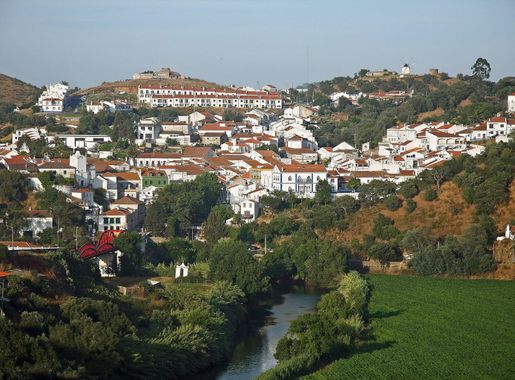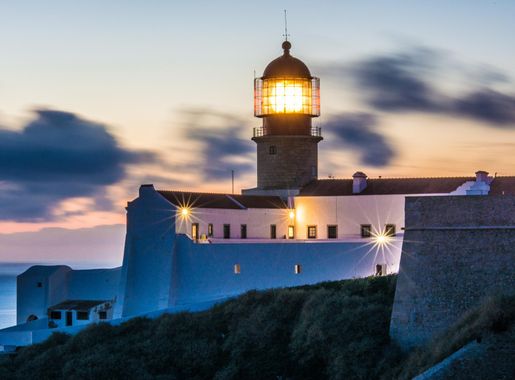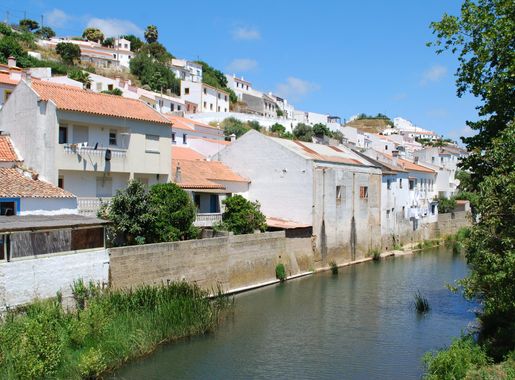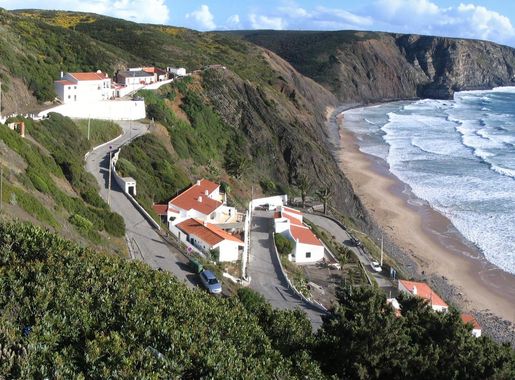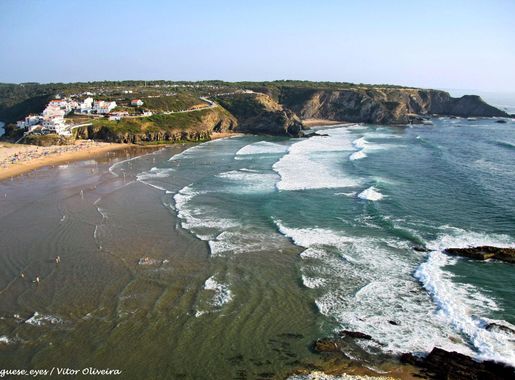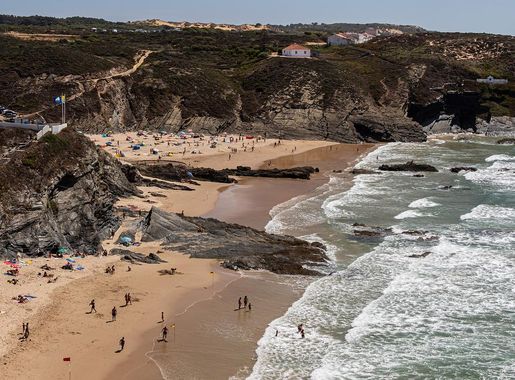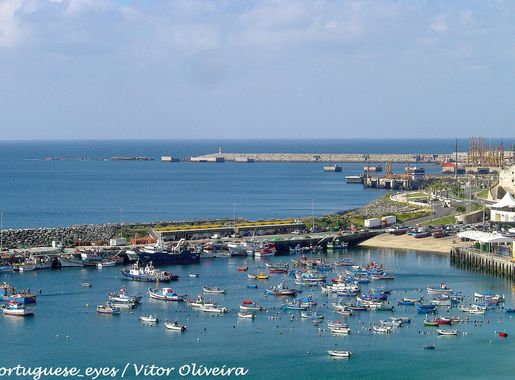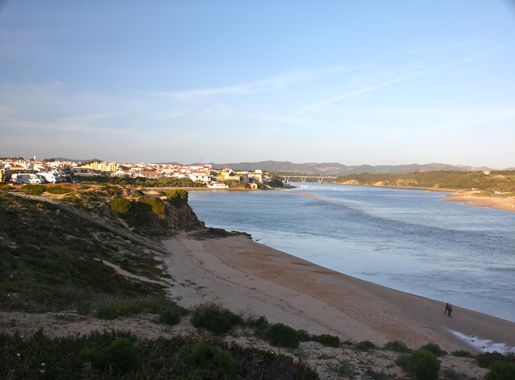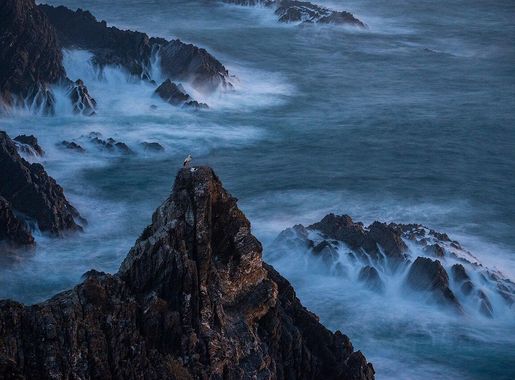
Rota Vicentina: Portugal's Coastal Gem
Explore Rota Vicentina, Portugal's hidden gem, offering stunning coastal trails, charming villages, and unspoiled nature for hikers and nature enthusiasts.
Rota Vicentina is a stunning network of walking trails in southwestern Portugal, offering breathtaking views of the Atlantic Ocean, charming villages, and unspoiled nature. The trails stretch over 400 kilometers, divided into the Historical Way, the Fishermen's Trail, and several Circular Routes. Each path provides unique experiences, from rugged coastal cliffs to serene countryside landscapes. The Historical Way guides you through traditional villages, lush valleys, and cork oak forests, allowing you to immerse yourself in local culture and history. The Fishermen's Trail, on the other hand, follows the dramatic coastline, providing spectacular ocean views and the chance to spot diverse marine life. This trail is more challenging but rewards hikers with unforgettable scenery and the sound of crashing waves. Whether you're an experienced hiker or a casual walker, Rota Vicentina has something for everyone. The well-marked trails, welcoming locals, and delicious regional cuisine make it a perfect destination for nature lovers and adventure seekers alike. Don't miss the opportunity to explore this hidden gem in Portugal, where every step unveils new wonders and unforgettable memories.
Local tips in Rota Vicentina
- Wear sturdy hiking shoes, as some trails can be rocky and uneven.
- Carry enough water and snacks, especially on longer routes.
- Check weather conditions before setting out, as coastal weather can change quickly.
- Respect local wildlife and natural habitats by sticking to marked trails.
- Consider staying in local guesthouses to experience genuine Portuguese hospitality.
- Try the regional cuisine, particularly fresh seafood and traditional dishes.
Rota Vicentina: Portugal's Coastal Gem
Rota Vicentina is a stunning network of walking trails in southwestern Portugal, offering breathtaking views of the Atlantic Ocean, charming villages, and unspoiled nature. The trails stretch over 400 kilometers, divided into the Historical Way, the Fishermen's Trail, and several Circular Routes. Each path provides unique experiences, from rugged coastal cliffs to serene countryside landscapes. The Historical Way guides you through traditional villages, lush valleys, and cork oak forests, allowing you to immerse yourself in local culture and history. The Fishermen's Trail, on the other hand, follows the dramatic coastline, providing spectacular ocean views and the chance to spot diverse marine life. This trail is more challenging but rewards hikers with unforgettable scenery and the sound of crashing waves. Whether you're an experienced hiker or a casual walker, Rota Vicentina has something for everyone. The well-marked trails, welcoming locals, and delicious regional cuisine make it a perfect destination for nature lovers and adventure seekers alike. Don't miss the opportunity to explore this hidden gem in Portugal, where every step unveils new wonders and unforgettable memories.
When is the best time to go to Rota Vicentina?
Iconic landmarks you can’t miss
Parque Natural do Sudoeste Alentejano e Costa Vicentina
Explore the breathtaking landscapes and rich biodiversity of Parque Natural do Sudoeste Alentejano e Costa Vicentina, a true gem of Portugal's natural heritage.

Rota vicentina
Discover Rota Vicentina: A Premier Hiking Destination in Portugal's Stunning Southwestern Coast.
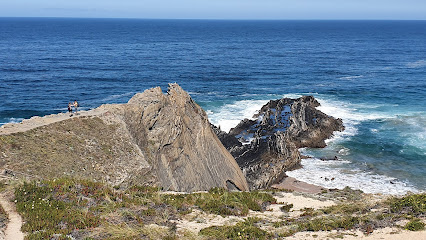
Rota Vicentina. Trilho de pescadores
Discover the breathtaking landscapes of Rota Vicentina's Trilho de Pescadores, a premier hiking destination along Portugal's stunning coastline.
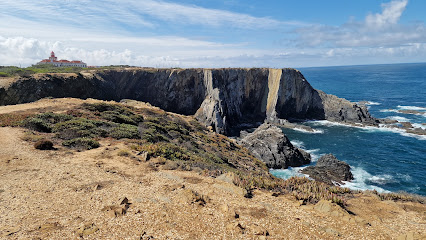
Unmissable attractions to see
Praia Fluvial de Monsaraz
Experience the beauty and tranquility of Praia Fluvial de Monsaraz, a stunning riverside beach perfect for relaxation and adventure in Portugal.
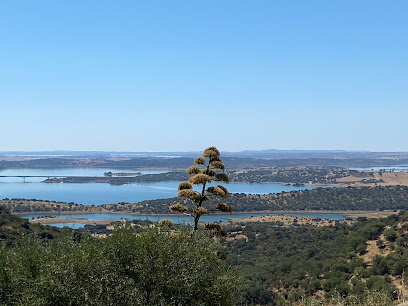
Parque Natural das Serras de Aire e Candeeiros
Explore the breathtaking beauty of Parque Natural das Serras de Aire e Candeeiros, a paradise for nature lovers and outdoor adventurers in Portugal.
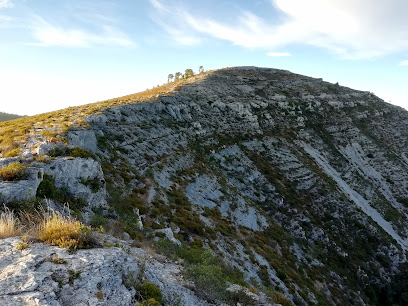
Castro Marim and Vila Real de Santo António Marsh Natural Reserve
Discover the breathtaking Castro Marim and Vila Real de Santo António Marsh Natural Reserve, a paradise for nature lovers and birdwatching enthusiasts in Portugal's Algarve region.
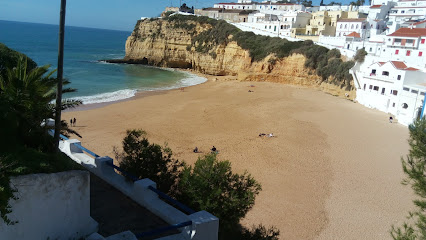
Ria Formosa Nature Park
Explore the breathtaking beauty and biodiversity of Ria Formosa Nature Park in Faro, Portugal, a natural wonder waiting to be discovered.
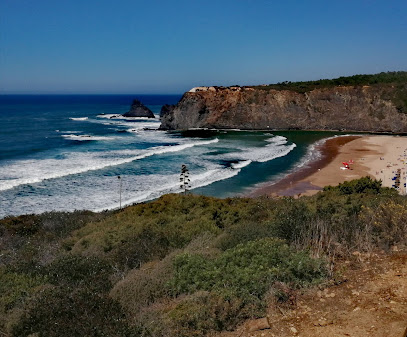
Praia Fluvial da Amieira
Experience the serene allure of Praia Fluvial da Amieira, a picturesque river beach in Portugal, perfect for relaxation and outdoor adventure.
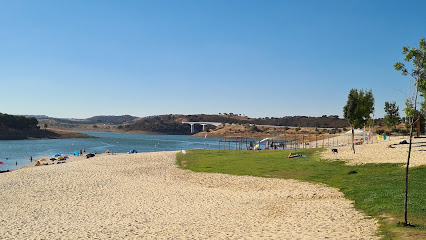
Farol Cabo Sardão
Discover the stunning beauty of Farol Cabo Sardão, a lighthouse offering breathtaking ocean views and scenic hiking trails along the Vicentina Coast.
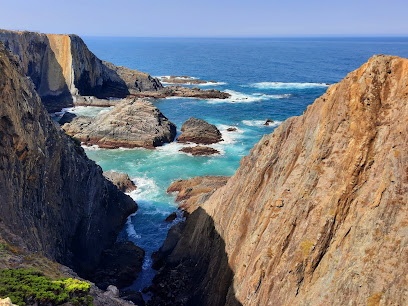
Camping Milfontes
Experience the natural beauty and vibrant community atmosphere at Camping Milfontes, your ideal getaway in Vila Nova de Milfontes, Portugal.

Praia da Arrifana
Experience the beauty of Praia da Arrifana, a stunning beach in Portugal's Algarve, where adventure meets tranquility along the breathtaking coastline.
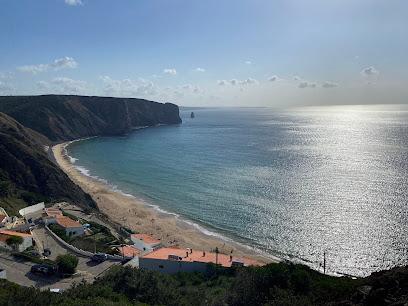
Lagoas de Santo André e da Sancha Nature Reserve
Explore the breathtaking Lagoas de Santo André e da Sancha Nature Reserve, a serene paradise for nature lovers and outdoor enthusiasts in Portugal.
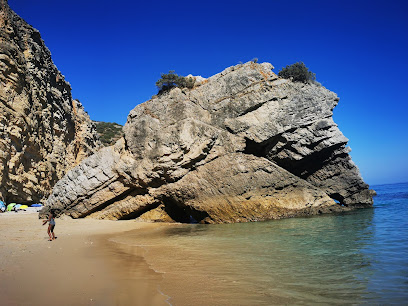
Castle of Aljezur
Explore the historic Castle of Aljezur, a captivating landmark offering stunning views and a glimpse into Portugal's rich past.
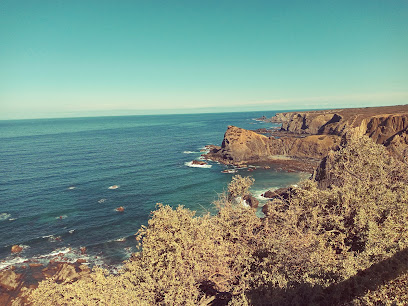
Parque Ecológico do Gameiro
Experience the tranquility of Parque Ecológico do Gameiro, a stunning ecological park in Cabeção, Portugal, perfect for nature lovers and eco-tourists.
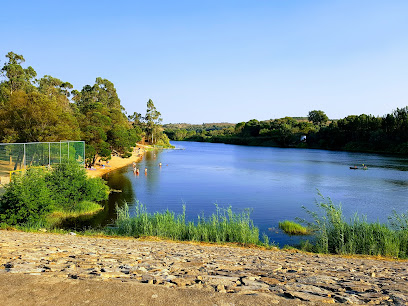
Praia de Sao Torpes
Experience the beauty of Praia de Sao Torpes, a stunning beach in Sines, Portugal, perfect for sunbathing, water sports, and vibrant nightlife.
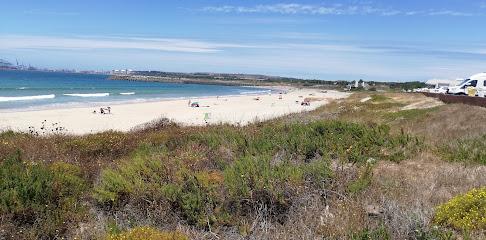
Fonte Férrea
Experience the breathtaking landscapes and serene atmosphere of Fonte Férrea, a picturesque park in the heart of Portugal, ideal for relaxation and exploration.
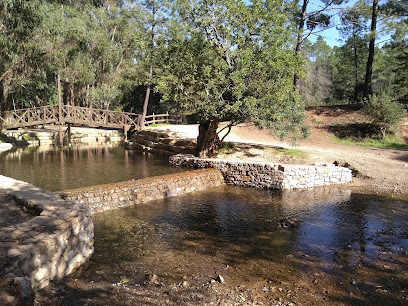
Praia de São Torpes
Experience the beauty of Praia de São Torpes, a stunning beach in Sines, Portugal, perfect for sunbathing, surfing, and savoring local cuisine.
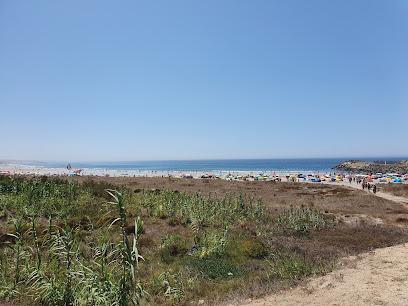
Santa Clara Dam
Discover the stunning vistas and outdoor activities at Santa Clara Dam, a top tourist attraction in Portugal that promises serenity and adventure.
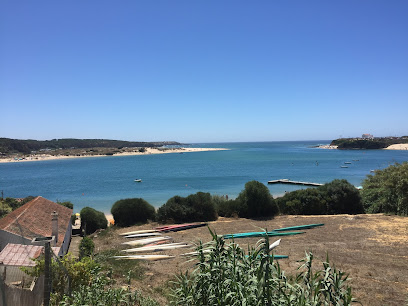
Essential places to dine
A Azenha do Mar
Discover authentic Portuguese seafood at A Azenha do Mar with stunning ocean views and an unforgettable dining experience.
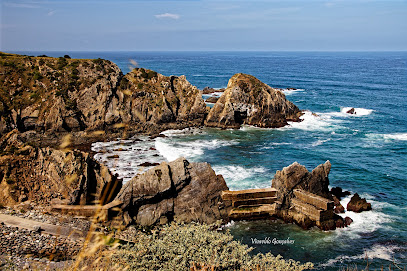
Costa Alentejana
Discover authentic Portuguese flavors at Costa Alentejana in Zambujeira do Mar – where every meal tells a story.
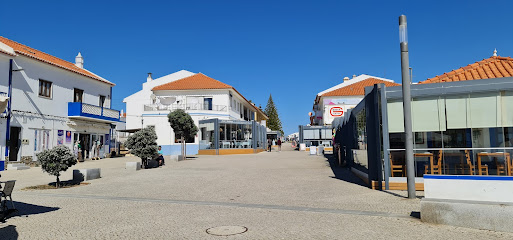
Restaurante Museu da Batata Doce
Discover the unique flavors of sweet potatoes at Restaurante Museu da Batata Doce in Rogil - where culinary creativity meets local tradition.
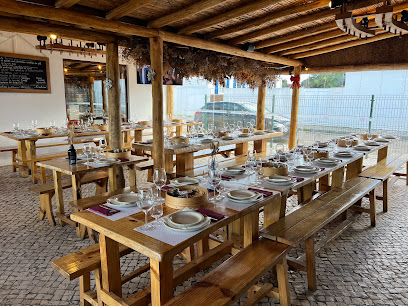
Restaurante Chaparro
Experience authentic Portuguese cuisine at Restaurante Chaparro in Odeceixe, where every meal tells a delicious story.
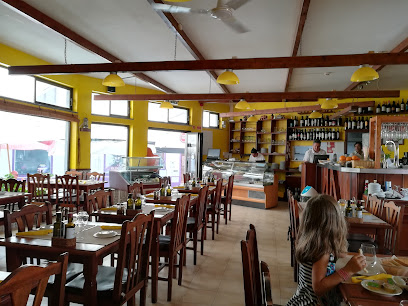
Zé Inácio
Discover authentic Portuguese cuisine at Zé Inácio, where every dish tells a story of flavor and tradition.
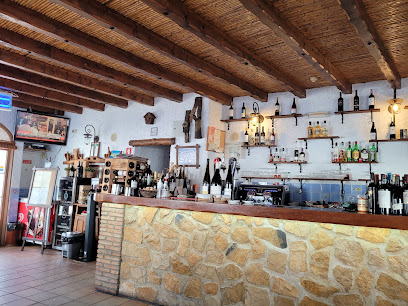
O Tarro
Experience authentic Portuguese cuisine at O Tarro in Odemira—where fresh ingredients meet local flavor in a cozy atmosphere.
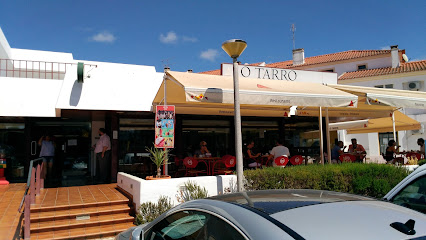
O Sacas
Discover O Sacas: A coastal culinary delight serving fresh seafood and local dishes in beautiful Zambujeira do Mar.
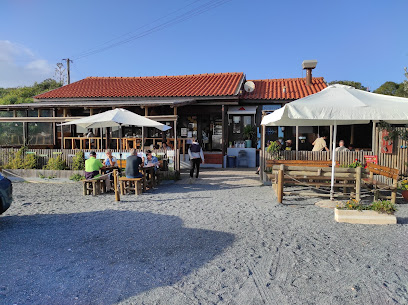
A Barca Tranquitanas
Discover authentic Portuguese flavors at A Barca Tranquitanas, a traditional restaurant on the breathtaking Costa Vicentina coastline.
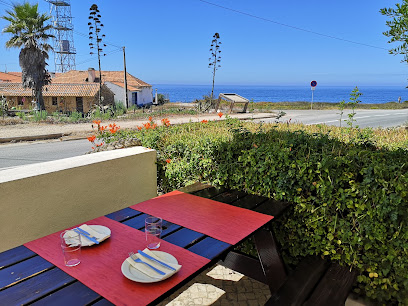
A Ilha
Discover A Ilha - An exquisite restaurant on Ilha do Pessegueiro offering authentic Portuguese cuisine with stunning coastal views.

Taberna do Gabão
Discover authentic Portuguese cuisine at Taberna do Gabão in Odeceixe, where tradition meets flavor in a cozy setting.
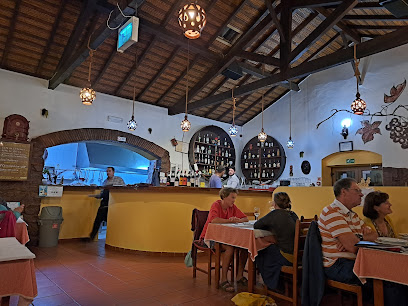
Altinho - Tapas e Petiscos
Discover Altinho - Tapas e Petiscos: A delightful Mediterranean restaurant in Odeceixe offering authentic Portuguese tapas in a charming atmosphere.
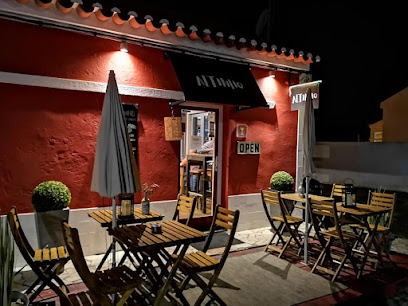
Rita
Discover Rita: A culinary haven in Zambujeira do Mar offering fresh seafood and breathtaking ocean views.
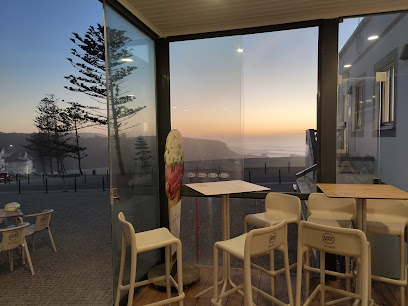
Manjedoura Restaurante Bar
Experience vibrant dining at Manjedoura Restaurante Bar in Vila Nova de Milfontes - where local flavors meet exceptional cocktails.
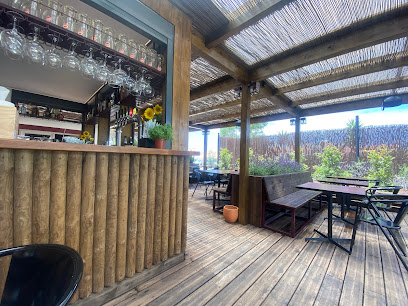
O Josué
Experience authentic Portuguese cuisine at O Josué on Costa Vicentina - where fresh seafood meets stunning ocean views.
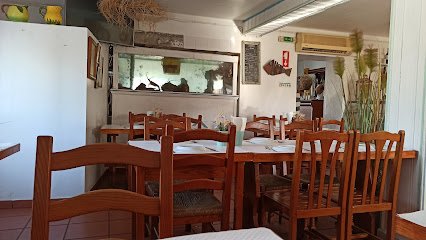
Mar Azul Restaurant & Bar
Savor authentic Nepalese cuisine at Mar Azul Restaurant & Bar in Almograve - where every dish tells a story.
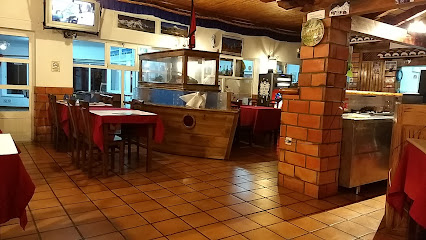
Markets, malls and hidden boutiques
Intermarché
Discover Odemira's Intermarché: A Supermarket Rich in Local Flavors and Everyday Essentials.
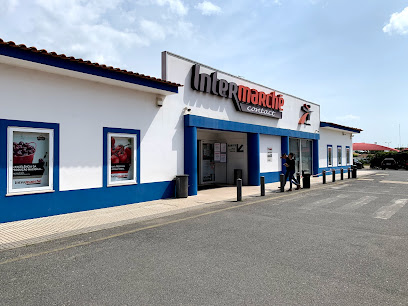
Rota Vicentina
Explore Rota Vicentina - A breathtaking network of walking trails along Portugal's stunning coastline, perfect for nature lovers and adventurers.
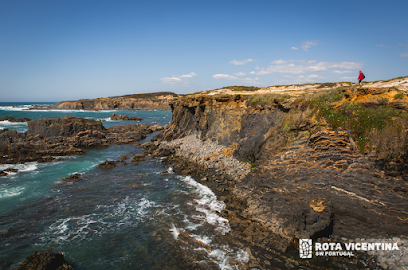
Mini Market Coffee Shop/Bakery
Discover the charming Mini Market Coffee Shop/Bakery, where fresh-baked delights and aromatic coffee create a delightful culinary experience for tourists.
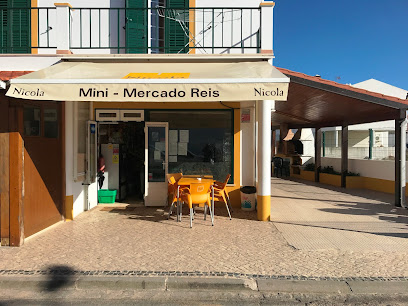
Pastelaria Rita
Experience the best of Portuguese pastries at Pastelaria Rita in Odemira, where every bite is a delightful journey through local flavors.
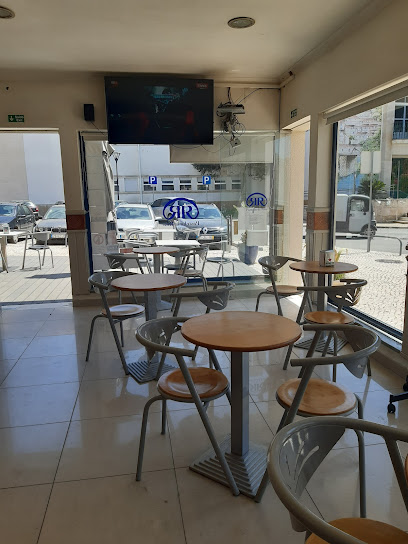
Rota vicentina
Explore Rota Vicentina: A Coastal Hiking Paradise in Portugal Offering Stunning Views and Rich Local Culture.
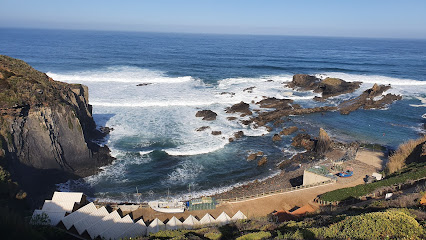
Novidades - Xiaoxin, Unipessoal Lda.
Explore Novidades - Xiaoxin in Odemira for an authentic shopping experience filled with local treasures and unique finds.
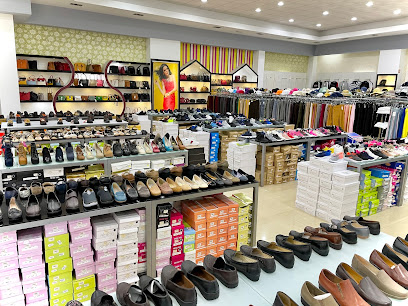
Born to Be Atentejano
Discover the heart of Atentejo at Born to Be Atentejano, a charming store in Vila Nova de Milfontes offering local artisan treasures and traditional Portuguese goods.

Peixaria Valério
Experience the freshest seafood at Peixaria Valério, a haven for seafood lovers looking to savor local flavors and culinary traditions.
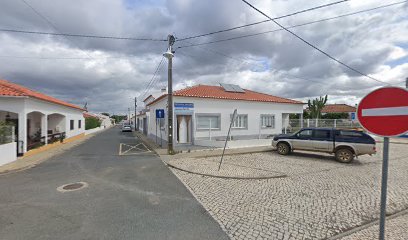
Singh Minimercado
Discover authentic Asian flavors and ingredients at Singh Minimercado, a vibrant grocery store in Odemira, Portugal, perfect for culinary explorers.
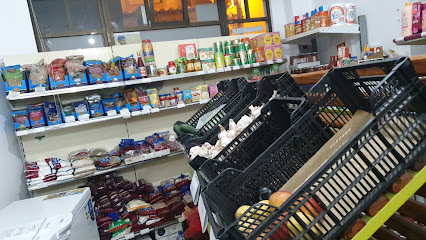
Instinto Natural - Ervanária
Explore the best of organic and health-focused products at Instinto Natural in Odemira, your go-to destination for wellness during your travels.
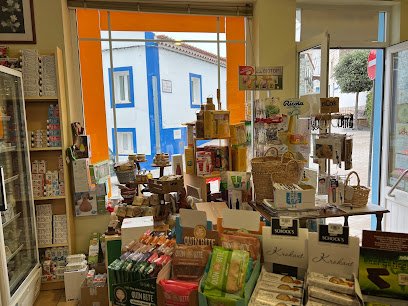
MEO
Explore MEO in Odemira for all your telecommunications needs, from smartphones to utility services, ensuring you stay connected during your travels.
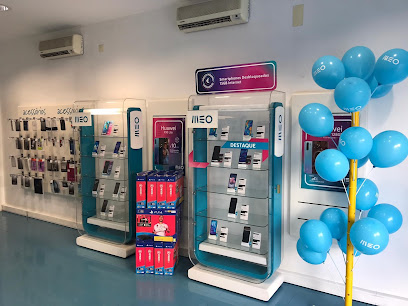
Cheema marcado
Explore the heart of Odemira at Cheema Marcado, where local flavors and authentic Portuguese culture come together in a charming grocery store.
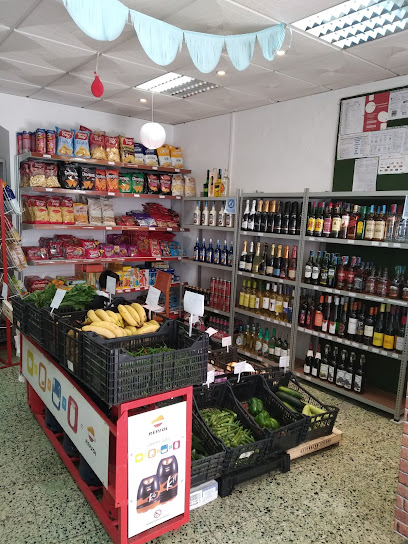
António M. G. Silva
Explore the unique offerings of António M. G. Silva, a charming store filled with local treasures and cultural delights.
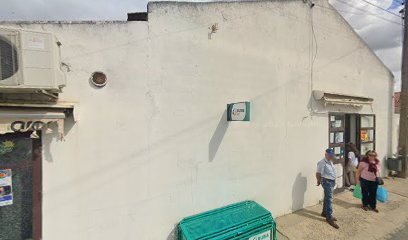
Loja XXI - Livraria Papelaria, Lda.
Discover Loja XXI in Odemira, your go-to destination for books, stationery, and unique gifts in a charming atmosphere.
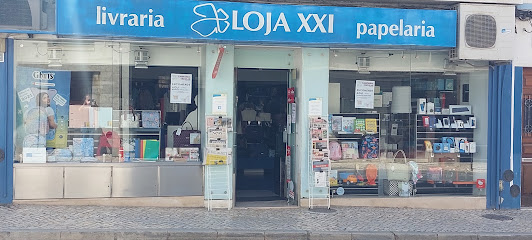
Cantinho da Xana
Explore Odemira's culinary treasures at Cantinho da Xana, where local flavors and friendly service create an unforgettable grocery shopping experience.
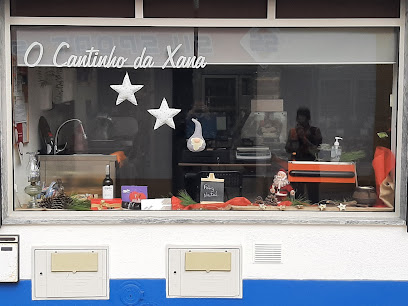
Essential bars & hidden hideouts
Costa Alentejana
Discover the culinary treasures of Costa Alentejana in Zambujeira do Mar, where fresh seafood meets stunning coastal views.
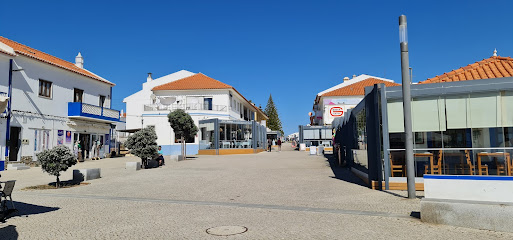
O Tarro
Discover O Tarro, a culinary treasure in Odemira, offering authentic Portuguese flavors in a cozy atmosphere for an unforgettable dining experience.
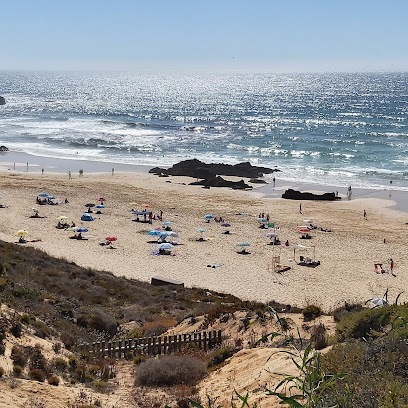
Kalux Beach Bar & Surf School
Experience the perfect blend of surf and relaxation at Kalux Beach Bar & Surf School in Sines, where coastal charm meets thrilling adventure.
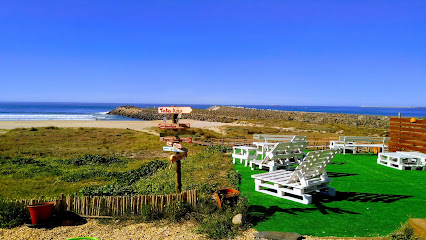
A Barca Tranquitanas
Experience the authentic taste of Portuguese cuisine at A Barca Tranquitanas, where delicious food meets stunning coastal views.

Taberna Vicentina
Experience the essence of Portuguese cuisine at Taberna Vicentina, where every dish is a celebration of local flavors and traditions.
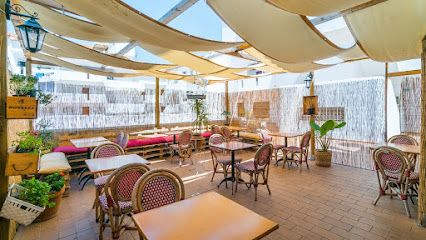
Taberna do Gabão
Experience authentic Portuguese cuisine in Odeceixe at Taberna do Gabão, where local flavors meet a warm, rustic ambiance.
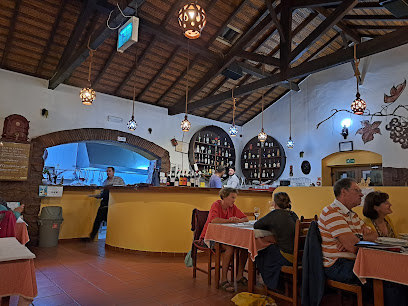
Rota Vicentina
Discover Rota Vicentina: A breathtaking coastal trail network showcasing Portugal's stunning landscapes and rich biodiversity.

Altinho - Tapas e Petiscos
Experience the authentic taste of Portugal at Altinho - Tapas e Petiscos, where delightful tapas and Mediterranean flavors await in scenic Odeceixe.
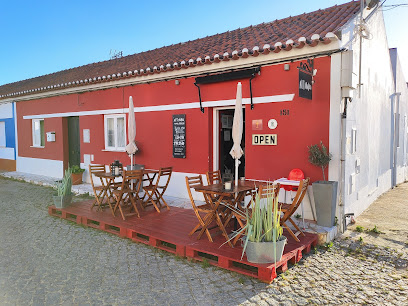
Rita
Experience the best of Portuguese cuisine at Rita, a charming restaurant in Zambujeira do Mar with stunning coastal views.
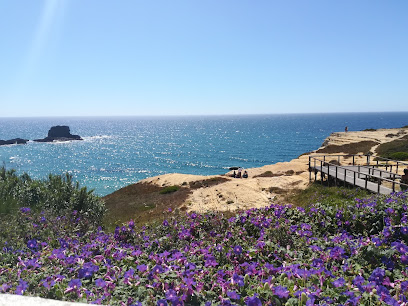
Manjedoura Restaurante Bar
Discover the essence of Portuguese cuisine at Manjedoura Restaurante Bar in Vila Nova de Milfontes, where tradition meets a vibrant bar scene.
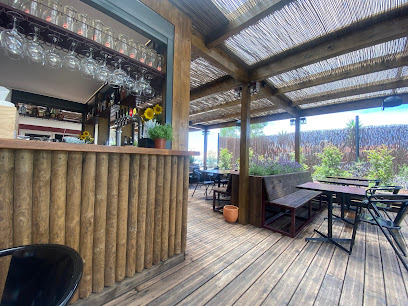
Mar Azul Restaurant & Bar
Experience authentic Nepalese cuisine in a cozy setting at Mar Azul Restaurant & Bar, where every dish tells a story.
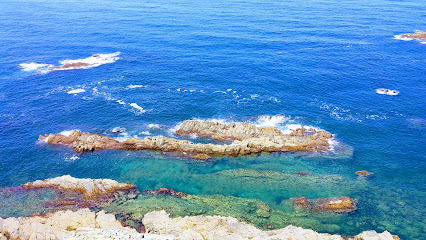
Torralta
Savor the authentic flavors of Portugal at Torralta, a delightful restaurant by the coast that promises a memorable dining experience.
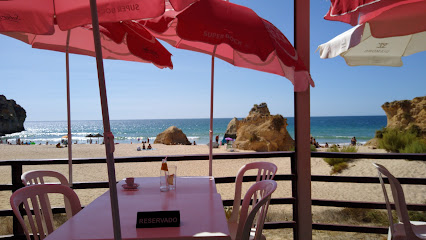
Rocamar
Discover authentic Portuguese flavors at Rocamar, a must-visit restaurant in Zambujeira, known for its fresh ingredients and warm hospitality.
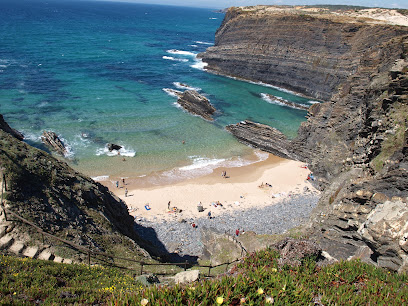
Papo Furado Portugal
Discover Papo Furado, a culinary treasure in Sines, Portugal, where traditional flavors meet modern dining in a cozy atmosphere.
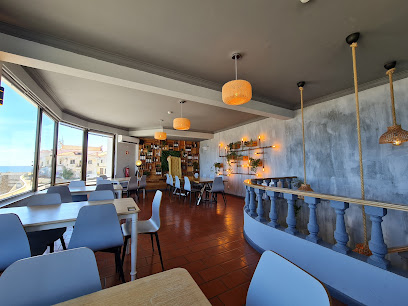
Blue Sky
Experience the flavors of Portugal at Blue Sky, a charming restaurant in Odeceixe, ideal for food lovers and outdoor enthusiasts alike.

Local Phrases about Rota Vicentina
-
- HelloOlá
[oh-lah] - GoodbyeAdeus
[ah-deh-oos] - YesSim
[seem] - NoNão
[now] - Please/You're welcomePor favor/De nada
[pohr fah-vohr/dee nah-dah] - Thank youObrigado/Obrigada
[oh-bree-gah-doh/oh-bree-gah-dah] - Excuse me/SorryCom licença/Desculpe
[kohm lee-sen-sah/dehs-kool-peh] - How are you?Como está?
[koh-moh ehs-tah] - Fine. And you?Bem. E você?
[behn/eh voh-seh] - Do you speak English?Fala inglês?
[fah-lah een-glehsh] - I don't understandNão entendo
[now ehn-tehn-doh]
- HelloOlá
-
- I'd like to see the menu, pleaseGostaria de ver o menu, por favor
[goh-stah-ree-ah deh vehr ooh meh-noo/ pohr fah-vohr] - I don't eat meatNão como carne
[now koh-moh kahr-neh] - Cheers!Saúde!
[sow-deh] - I would like to pay, pleaseGostaria de pagar, por favor
[goh-stah-ree-ah deh pah-gahr/ pohr fah-vohr]
- I'd like to see the menu, pleaseGostaria de ver o menu, por favor
-
- Help!Ajuda!
[ah-zhoo-dah] - Go away!Vai-te embora!
[vah-ee-teh ehm-boh-rah] - Call the Police!Chama a Polícia!
[shah-mah ah poh-lee-see-ah] - Call a doctor!Chama um médico!
[shah-mah oom meh-dee-koo] - I'm lostEstou perdido
[eh-stoh pehr-dee-doo] - I'm illEstou doente
[eh-stoh doo-ehn-teh]
- Help!Ajuda!
-
- I'd like to buy...Gostaria de comprar...
[goh-stah-ree-ah deh kohm-prahr] - I'm just lookingEstou só a ver
[eh-stoh soh ah vehr] - How much is it?Quanto custa?
[kwahn-toh koosh-tah] - That's too expensiveIsso é demasiado caro
[ee-soh eh dah-mah-see-ah-doo kah-roo] - Can you lower the price?Pode baixar o preço?
[poh-deh bahy-shahr ooh preh-soo]
- I'd like to buy...Gostaria de comprar...
-
- What time is it?Que horas são?
[keh oh-rah-s sow] - It's one o'clockÉ uma hora
[eh oo-mah oh-rah] - Half past (10)Meia (10)
[may-ah (dohs-eh)] - MorningManhã
[mah-nyah] - AfternoonTarde
[tahr-deh] - EveningNoite
[noy-teh] - YesterdayOntem
[ohn-tehng] - TodayHoje
[oh-zheh] - TomorrowAmanhã
[ah-mah-nyah] - 1Um
[oom] - 2Dois
[doh-ees] - 3Três
[trehs] - 4Quatro
[kwah-troo] - 5Cinco
[seen-koo] - 6Seis
[saysh] - 7Sete
[seh-teh] - 8Oito
[oy-toh] - 9Nove
[noh-veh] - 10Dez
[dehs]
- What time is it?Que horas são?
-
- Where's a/the...?Onde é o/a...?
[ohn-deh eh ooh/ah] - What's the address?Qual é a morada?
[kwahl eh ah moh-rah-dah] - Can you show me (on the map)?Pode mostrar-me (no mapa)?
[poh-deh mohs-trahr-meh (noo mah-pah)] - When's the next (bus)?Quando é o próximo (autocarro)?
[kwahn-doh eh ooh proh-see-moh (ow-toh-kah-roo)] - A ticket (to ....)Um bilhete (para ....)
[oom bee-lyeh-teh (pah-rah)]
- Where's a/the...?Onde é o/a...?
History of Rota Vicentina
-
The Rota Vicentina region, located in southwestern Portugal, has been inhabited since prehistoric times. Archaeological findings, including megalithic monuments and artifacts, suggest that early human communities settled in this area. The dolmens and menhirs scattered across the landscape are a testament to the region's ancient history and its significance as a site of early human activity.
-
During the Roman Empire, the Rota Vicentina area was integrated into the province of Lusitania. The Romans established roads, bridges, and settlements to support their expansive trade networks. The remnants of these infrastructure projects, such as the Roman road near Santiago do Cacém, highlight the strategic importance of this region in facilitating communication and commerce across the empire.
-
In the medieval period, the Rota Vicentina region was marked by the construction of castles and fortresses, such as the Castle of Aljezur and the Castle of Santiago do Cacém. These fortifications were built to defend against Moorish invasions and pirate attacks. Additionally, the establishment of monasteries and churches, including the Monastery of São Vicente, reflects the spread of Christianity and the region's role in the religious landscape of medieval Portugal.
-
The 15th and 16th centuries marked the Age of Discoveries, a period when Portuguese explorers set sail to chart unknown territories. The Rota Vicentina coastline played a crucial role as a launching point for many expeditions. The town of Sines, the birthplace of the renowned navigator Vasco da Gama, is a key historical site. His voyages to India significantly influenced global trade and navigation, cementing Portugal's place in maritime history.
-
In the 19th century, the Rota Vicentina region experienced significant agricultural development. The introduction of new farming techniques and crops, such as cork oak plantations, transformed the local economy. The cork industry became a vital part of the region's identity, with extensive cork oak forests still present today. These developments also led to the growth of rural communities and the establishment of agricultural cooperatives.
-
In recent decades, the Rota Vicentina has become a focus of conservation efforts aimed at preserving its unique landscapes and biodiversity. The creation of the Southwest Alentejo and Vicentine Coast Natural Park in 1995 was a major milestone. This protected area encompasses a variety of ecosystems, including cliffs, dunes, and woodlands, and supports numerous species of flora and fauna. Conservation initiatives have helped maintain the natural beauty and ecological integrity of the region, making it a popular destination for eco-tourism and outdoor activities.
Rota Vicentina Essentials
-
Rota Vicentina is located in southwestern Portugal and can be accessed via multiple routes. The nearest major airport is Lisbon Portela Airport (LIS), approximately 200 kilometers north of Rota Vicentina. From Lisbon, you can rent a car, which is the most convenient way to explore the area. Alternatively, you can take a train to Funcheira and then a bus to reach the various towns within Rota Vicentina. Another option is to fly into Faro Airport (FAO) in the Algarve region and drive north to Rota Vicentina.
-
While a car is the most convenient way to explore Rota Vicentina, public transportation options are also available. Local buses connect the major towns and villages within the area, but schedules may be limited. Bicycles are a popular choice for exploring the scenic trails, and many accommodations offer bike rentals. Taxis are available but can be more expensive. Car rentals are available at major airports and in larger cities like Lisbon and Faro.
-
The official currency in Portugal is the Euro (EUR). Credit and debit cards are widely accepted in hotels, restaurants, and larger shops. However, it is advisable to carry some cash, especially when visiting smaller establishments or rural areas. ATMs are available in most towns and villages within Rota Vicentina, but it's a good idea to withdraw sufficient cash in advance to avoid any inconvenience.
-
Rota Vicentina is generally a safe destination for tourists. Violent crime is rare, but petty theft such as pickpocketing can occur in crowded areas. Always keep an eye on your belongings and avoid leaving valuables in your car. There are no specific high-crime areas targeting tourists, but it is always wise to stay vigilant and aware of your surroundings, especially at night.
-
In case of emergency, dial 112 for immediate assistance, which is the European emergency number. Medical facilities are available in the larger towns within Rota Vicentina, and pharmacies are common. It is recommended to have travel insurance that covers medical emergencies. For minor health issues, over-the-counter medications can be purchased at local pharmacies.
-
Fashion: Do dress comfortably for hiking and outdoor activities. Avoid overly revealing clothing when visiting villages or religious sites. Religion: Do respect local customs and traditions. When visiting churches, dress modestly and remain quiet. Public Transport: Do be respectful and offer your seat to elderly passengers. Don’t eat or drink on public transport. Greetings: Do greet people with a handshake and a smile. A simple 'Olá' or 'Bom dia' (Good morning) is polite. Eating & Drinking: Do try local cuisine and accept food and drink offerings graciously. Don’t rush through meals; dining is a leisurely activity in Portugal.
-
To experience Rota Vicentina like a local, consider visiting the local markets for fresh produce and artisanal goods. Engage with locals, as they are often friendly and eager to share stories and recommendations. Don't miss the opportunity to hike the Fishermen's Trail, known for its stunning coastal views. For a unique experience, visit a traditional 'tasca' (local tavern) to enjoy authentic Portuguese food and drink. Lastly, take part in local festivals and events to immerse yourself in the culture and traditions of the region.
Nearby Cities to Rota Vicentina
-
Things To Do in Setúbal
-
Things To Do in Évora
-
Things To Do in Lisbon
-
Things To Do in Cascais
-
Things To Do in Sintra
-
Things To Do in Huelva
-
Things To Do in Viseu
-
Things To Do in Badajoz
-
Things To Do in Caldas da Rainha
-
Things To Do in Tomar
-
Things To Do in Seville
-
Things To Do in Cádiz
-
Things To Do in Coimbra
-
Things To Do in Ronda
-
Things To Do in Tangier

